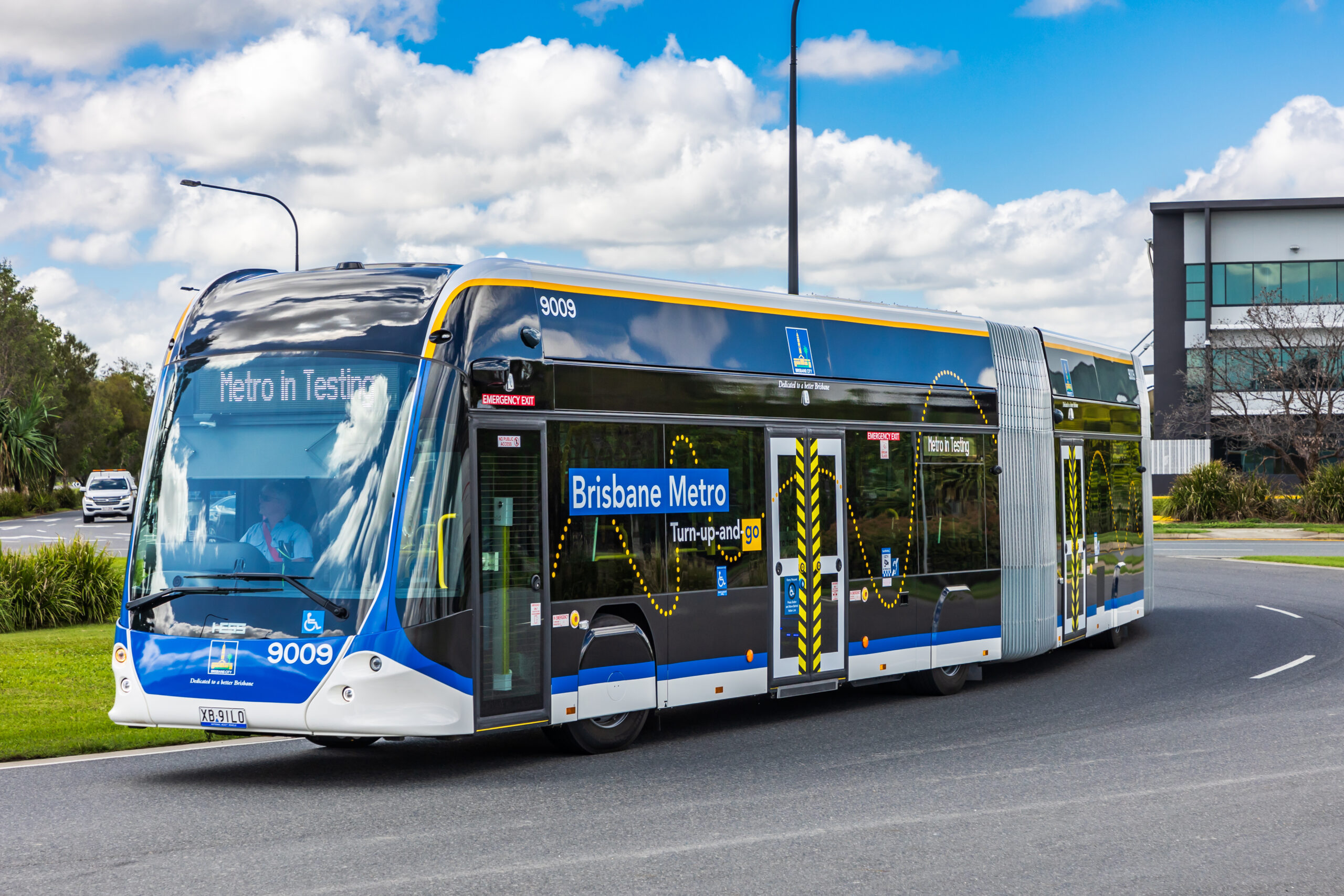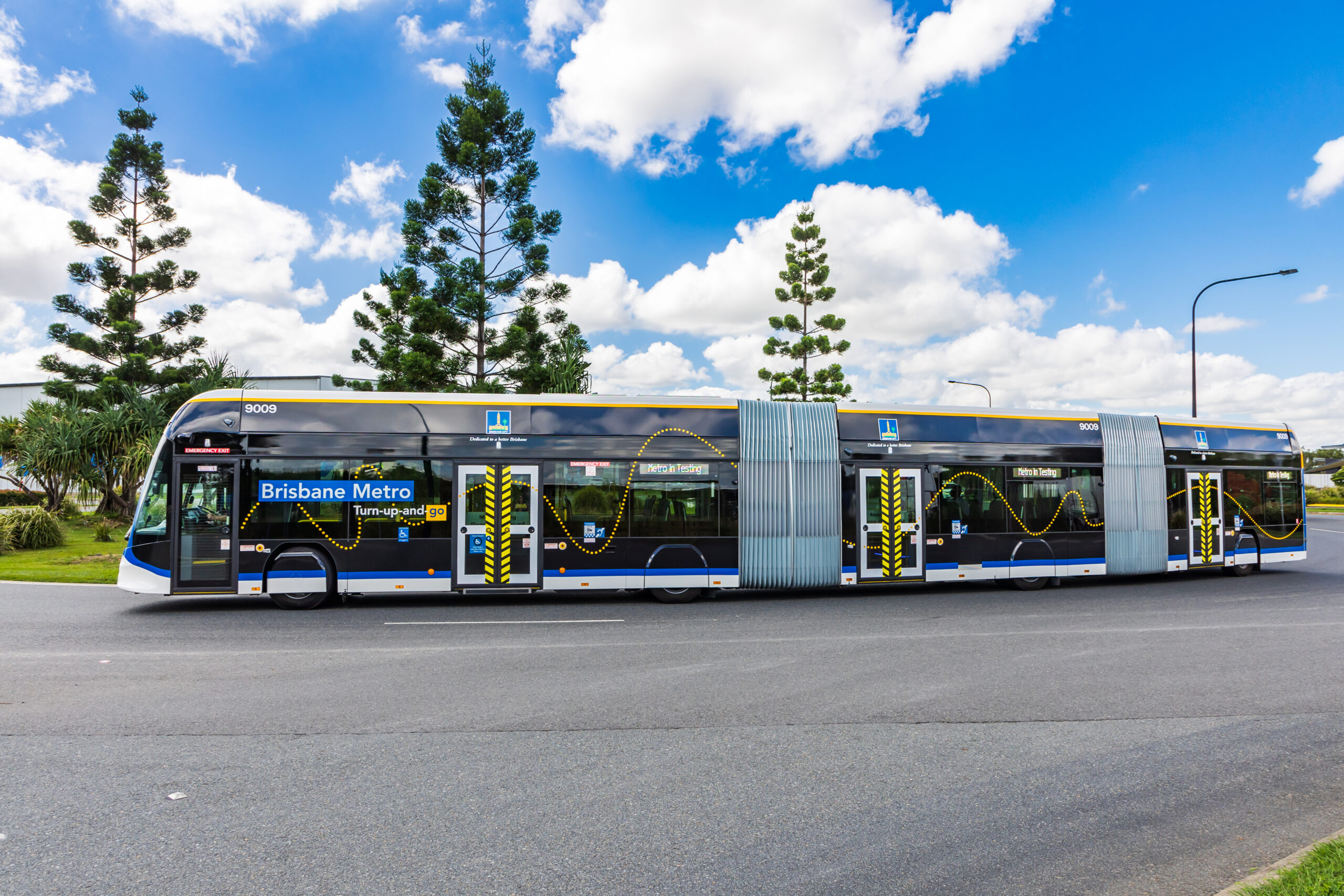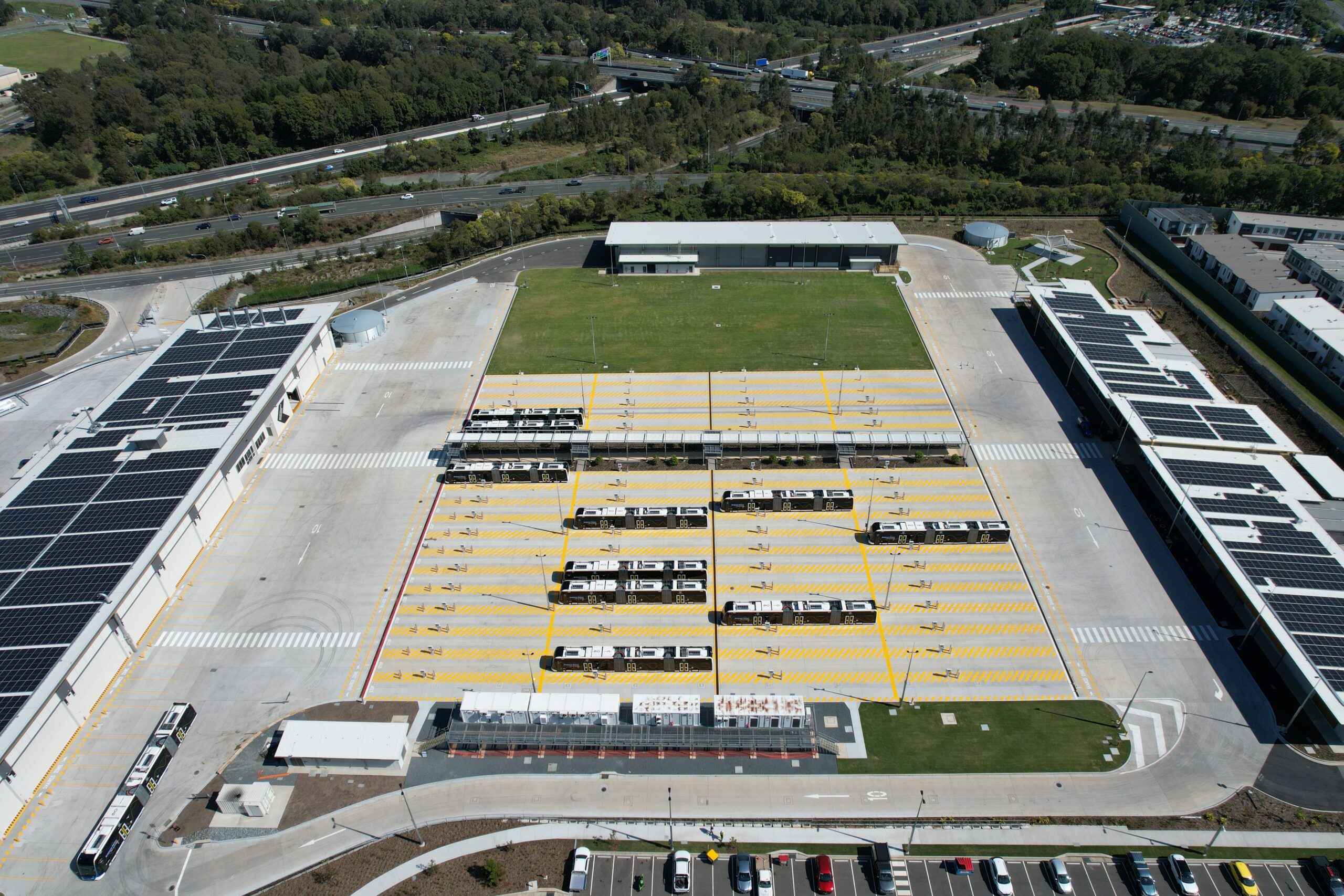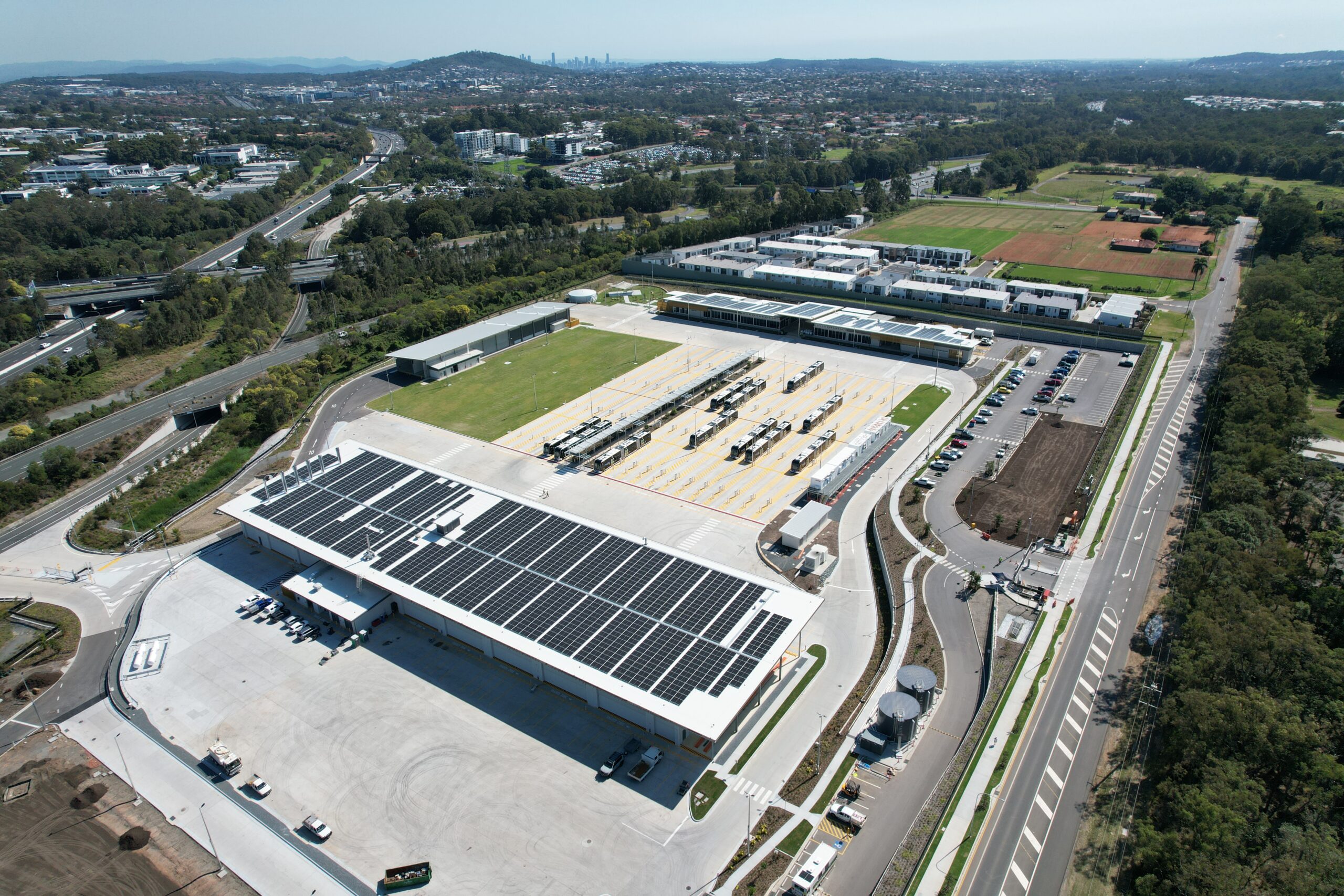Sign up for daily news updates from CleanTechnica on email. Or follow us on Google News!
Like many modern cities, Brisbane was serviced by an efficient electric tram network until the ’70s, when it was ripped up and diesel buses took the place of trams. We’ve all seen Who Framed Roger Rabbit?, and so we know who was really behind that move. In a retro revolution, Brisbane is set to bring in an electric Metro system, with electric “Metro” buses for clean mass transit. Should have left the trams in, say many.

This move has its sights set on a clean, green Olympic games in 2032, as well as reducing pollution in the riverside city. You can watch the video of the futuristic vehicles designed by HESS, manufactured by Volgren, and powered by Hitachi here.
Now, 59 HESS lighTram® 25 vehicles have been ordered and are expected to be in service within the month. According to the council, “Metros include the high-quality and high-capacity features of light rail while avoiding the need for tracks, overhead line equipment and infrastructure by utilising our existing busway. With a spacious bi-articulated design, metros comfortably transport 150 passengers and 170 passengers in event mode, enabling greater capacity on Brisbane’s public transport network.”

“Through a unique co-design process with the accessibility sector Brisbane Metro is aiming to exceed compliance with relevant disability standards and guidelines to help deliver Australia’s leading accessible public transport option. Key achievements include increasing the number and size of mobility aid bays and the number of priority seating areas, making this Australia’s leading accessible public transport option.”
The council has spent the 18 months testing the vehicles. This weekend, they will host an open day on the south side of the city, inviting the public to “Explore one of Australia’s most technologically advanced depots.” The depot is also sustainable, using solar, recycled grey water, and rainwater collection.

“More than 2,300 solar panels have been installed, generating clean energy equivalent to the annual power consumption of 280 homes. This initiative alone is expected to reduce carbon emissions by an amount comparable to removing over 500 cars from Brisbane’s roads each year. The Brisbane Metro Depot has been awarded a 5 Star Green Rating for its sustainable design. The site incorporates rainwater harvesting and recycled water systems for vehicle washing, further contributing to its environmental credentials.”

How do you charge a fleet that big and that power hungry without crashing the local electricity grid? Brisbane Metro has chosen to use two types of charging: flash charging (Grid eMotion™) and CCS2 plug-in slow chargers. This is the first time that Grid-eMotion flash charging has been used in Australia. It can charge a metro in under six minutes and will be delivered using overhead pantograph infrastructure. You saw that in the video above. The pantograph will autonomously connect to the charging point in the metro roof. The council plans to install 15 “Flash” chargers with 600 kW of capacity each at end-of-route locations.
60 x 50 kW slow chargers are available at the at the Southside metro depot for off-peak charging — optimising Queensland’s energy grid and also increasing battery lifespan.
“A Power Load Management system controls the slow charging at the metro depot and optimises the current draw from the grid to moderate peak loads.”
Brisbane City Council has made extensive modifications during the trial after consultations with the “accessibility sector” to make sure that the Brisbane Metro is one of Australia’s leading accessible forms of transport. The Metros will offer onboard USB charging and free WiFi.
Hitachi’s Grid–eMotion® Flash charging solution was previously known as TOSA. By utilizing ultra-fast charging at intermediate stops, it optimizes operational cost and convenience for fleets. Hitachi claims that “the system can save as much as 1,000 tons of CO2 on a bus line covering approximately 600,000 kilometres per year. In addition, the e-bus’ energy costs are 30 percent below those of a diesel bus.” Ultra-fast charging eliminates the need for catenaries and reduces the size of required batteries. Range and schedule limitations are no longer a problem.
Grid-eMotion® Flash has already proven itself in Nantes, France, enabling the local operator Semitan to transition to sustainable mobility. Grid-eMotion Flash enables Semitan to flash-charge its e-buses within seconds at passenger stops. The reduced size of the batteries required increases passenger capacity. “Thanks to this solution, passengers now enjoy a cleaner, quieter and smoother journey.”
HESS’ CEO, Alex Naef, said of the Brisbane Metro project: “The lighTram® 25 offers something unique in the Australian transport sector: a vehicle capable of quietly, efficiently and sustainably transporting large numbers of people, all while providing an elevated passenger experience.” He believes that the combination of the lighTram 25 and flash charging “is an attractive solution for public transport systems not just in Europe, but around the globe.”
“This is a flexible transport system that is not reliant on rail infrastructure and can easily be adapted for different transport routes because of the vehicle’s manoeuvrability. Over the full lifetime of the vehicle, the lighTram® 25 offers cities one of the most cost-effective solutions for improving public transport and reaching governments’ sustainability goals,” Naef said.
He elaborated on the evaluation of the trial program, which included: busway performance, manoeuvrability, speed, acceleration, braking, energy consumption, recharging, passenger accessibility, and the overall driver experience.
“Brisbane City Council, HESS and key stakeholders spent considerable time developing what is set to become one of the most accessible public transport options in Australia. The metro has been uniquely co-designed with three large and easily accessible mobility aid bays in the first compartment, an automatic electric ramp, hearing loops and the ability to communicate with the driver via vehicle help points, among other features,” Naef explained.
“Driver feedback has also been very positive with driving stability and vehicle manoeuvrability two key themes that are rated highly by drivers.”
“Our philosophy is that HESS vehicles are there first and foremost to carry passengers, not batteries,” Alex said.
Hess confirms that other Australian transport operators and authorities are showing interest in this new transport solution. Hopefully it won’t be long before they will get on board both figuratively and literally. Australia could use an effective solution to heavy road transport as well. Could this same system be used for semis carrying goods across our wide brown land?
It’s getting up front and personal with plans to extend the metro network to the north side of the city and into the suburb where I live in Bracken Ridge. Looks like we might be getting a depot and charging station nearby at Fitzgibbon. The future is intruding on the present and the rEVolution is gathering pace.
Will Brisbane Metro mean fewer people in cars and less congestion? Metros will use the existing busway network. It should certainly mean fewer diesel and LPG powered buses on the road — currently around 1200. Only time will tell, but certainly the future of public transport in Brisbane is bright, accessible, and electric. Come visit for the Olympics and try it for yourself!

Have a tip for CleanTechnica? Want to advertise? Want to suggest a guest for our CleanTech Talk podcast? Contact us here.
Latest CleanTechnica.TV Videos
CleanTechnica uses affiliate links. See our policy here.
CleanTechnica’s Comment Policy




